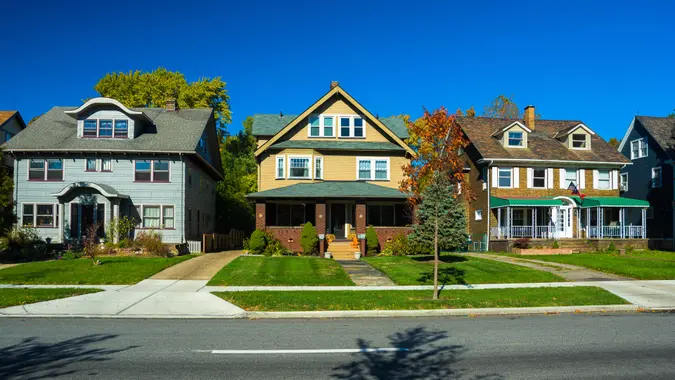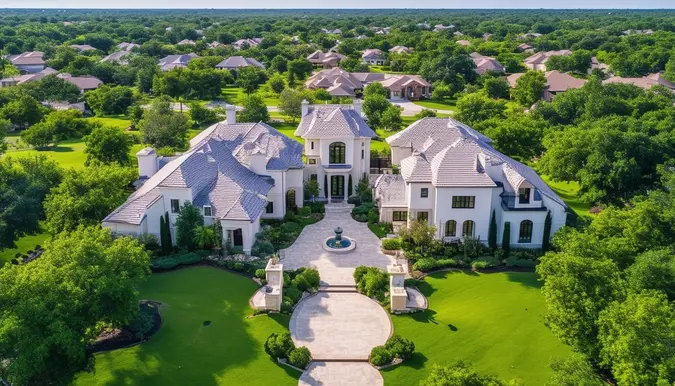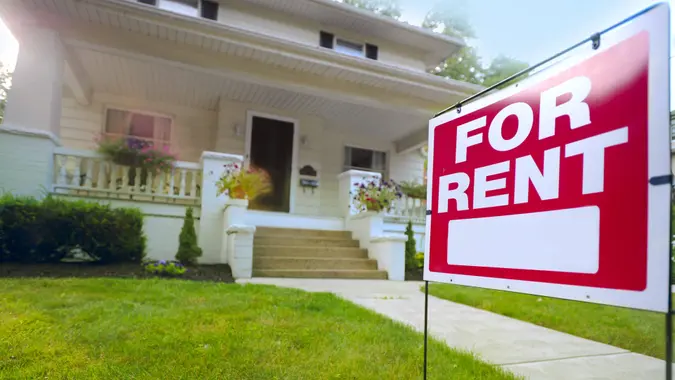2 Best Places To Stash Your Homebuying Fund

Commitment to Our Readers
GOBankingRates' editorial team is committed to bringing you unbiased reviews and information. We use data-driven methodologies to evaluate financial products and services - our reviews and ratings are not influenced by advertisers. You can read more about our editorial guidelines and our products and services review methodology.

20 Years
Helping You Live Richer

Reviewed
by Experts

Trusted by
Millions of Readers
Saving for a new home is a lot. To be successful, you need a lot of diligence, careful planning and patience.
It takes the average American household 51 months — 4.25 years — to save 20% for a down payment on a house, according to Mint. The average 20% down payment on a single-family home is $54,145.
Claire Baggao, founder of advice-only financial planning firm Layline Financial, and her husband were working hard to save for their very first home purchase from 2019 to 2022. However, when interest rates made obtaining a reasonable mortgage difficult, the San Francisco Bay Area couple — and parents of three children — made some surprising moves.
Stay Flexible
“First, we bought a 47-foot sailboat and started sailing,” Baggao said. “It was a luxurious, somewhat irresponsible buy in the midst of the post-COVID chaos, after it was clear the world would eventually return to normal.”
However, she said this purchase was a lifelong dream for them. “So when life threw us a curveball, we switched up the order of operations,” she said, adding that she often teaches her clients this concept, encouraging them to change course if the need arises. “The pursuit of happiness is not linear, and any forward movement is moving forward,” she said.
Taking the Aggressive Approach
After purchasing their sailboat, the couple still had money left to put aside for their future home.
“We invested the rest of the remaining cash from savings in a portfolio with 80% equity and 20% bonds,” Baggao said. “Now, this is pretty aggressive, especially with the uncertainties that come with a rising rate environment.”
However, they decided to take the risk. “My mentor [and] previous employer once told me, ‘It’s not timing the market, it’s time in the market,'” she said. “So in it went.”
Of course, they’re keeping a close watch their funds.
“Further, we continue to dollar-cost-average into this account every month, regardless of market conditions,” she said. “Since we plan to buy a house in the next three-to-five years, we will plan to move into something more conservative in the next two-to-four years, once the market improves.”
If you want to emulate this strategy, she said you’ll want to have easy access to your cash relatively close to when you plan to use it.
“In general, your savings should be pretty liquid if you plan to use the funds in the next 12-18 months,” she said.
Taking a Strong and Steady Balanced Investment Strategy
Anthony De Filippis, director at tax accounting firm Amplify 11, has been saving for a house for approximately eight years. “My journey has been filled with both anticipation and meticulous financial planning,” he said. “I anticipate that it will take me another two years to reach my goal and purchase my dream house.”
As a financial professional, it’s no surprise that he’s created a strategy to maximize his savings.
“The primary place I’ve been keeping my money is in a high-yield savings account coupled with diversified investments in bonds,” he said. “The rationale behind this strategy is multi-fold.”
Specifically, he said one investment balances out the other. “The high-yield savings account, although not offering returns as lucrative as the stock market, provides a stable, predictable and risk-free rate of return,” he said. “It ensures my hard-earned money isn’t subject to the volatility of stock markets.”
Conversely, he said bonds provide a different type of benefit. “Bonds offer a higher rate of return compared to the savings account, while still being a safer option than equities,” he said.
When combined, he believes his high-yield savings account and bonds serve as the ideal savings vehicles to buy his future house.
“This dual approach strikes a balance between security and growth,” he said. “While some might opt for more aggressive investment avenues, I believe in a balanced approach, especially when saving for something as monumental as a house.”
He said this allows him to feel confident in his investment while still trying to get the most from his savings. “The aim is to protect the principal amount while also ensuring a steady growth rate,” he said.
Takeaway
There’s no right or wrong way to save for your future home. Everyone has a different goal, financial situation and comfort level with risk.
Hopefully, this peek behind the curtain at the strategies two different financial professionals are using to save for their future homes gave you something to think about. If you’re not satisfied with your current savings strategy, perhaps you will consider adopting one of the ideas highlighted above.
Depending on where you’re at with your savings, home ownership might feel impossibly far away — but it’s not. Keep working toward your goal, and one day you will get the keys to a dream home of your very own.
 Written by
Written by  Edited by
Edited by 

























